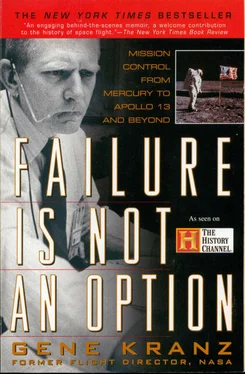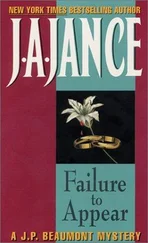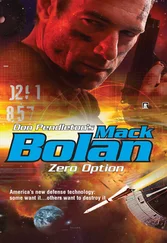Bob Thompson, the recovery operations chief, called, indicating that an Air Rescue Service twin engine amphibious aircraft had been launched from Puerto Rico and was flying to the new landing point north of the Virgin Islands.
The wait was agonizing, as it had been on John Glenn’s reentry. I muttered a silent prayer to St. Christopher, the patron saint of travelers, and it seemed everyone was on his second cigarette during blackout. Ten minutes later, we got our first call from Aurora 7 . “I’m on the main chute at 5,000. Status is good.” It was if ten tons had been lifted off our backs. We felt like standing and cheering, but that didn’t happen in Kraft’s control room, only in the movies. Chris’s smile was more like the grimace of one receiving a last-minute reprieve from the guillotine. He was not happy about the ending of his second manned orbital mission. A relieved Grissom advised Carpenter, “Your landing point is over 200 miles long. We will jump Air Rescue personnel to you in about an hour.”
For nearly thirty minutes after the landing the press was in a panic, thinking an astronaut had been lost in space, or dropped into a watery grave. When the recovery helicopters got to him, a typically laid-back
Scott Carpenter was described as quite comfortable in his raft, even a bit irritated because they had interrupted his contemplation. He was eating a candy bar.
In the rescue process Scott was quoted as saying, “I didn’t know where I was and they [Mercury Control] didn’t, either.” Those were fighting words to a new young RETRO who prided himself on perfection in the emerging art of retrofire control.
“Bullshit,” Llewellyn exclaimed. “The SOB is damned lucky to be alive.”
Carpenter’s words would often be remembered. At beer parties, or during debriefings, if we wanted to get John Llewellyn to tell the story of Aurora 7 and his first mission as RETRO, we would stand and say, “I didn’t know where I was and they didn’t, either.” And the story would commence. Later, Scott Carpenter became entranced by the mysteries of the sea. He lived and worked on the ocean floor for periods of thirty and forty-five days, developing techniques and systems for undersea operations. He retired from NASA in 1967 and was assigned by the Navy to the deep-submergence-systems project.
During mission debriefing, Scott said simply, “I think the reason I got behind at retrofire was because approaching Hawaii at dawn on the third orbit I discovered the source of the fireflies. I took out the camera and tried to get some pictures. I felt that I had time to get that taken care of and prepare for retrofire properly, but time just slipped away.”
The“fireflies” reported onGlenn’s andCarpenter’s missions were simply frozen droplets of water from the evaporators used to cool the cabin and space suits. They were most noticeable at sunrise on each orbit.
Scotty’s mission was close, too damn close. A crewman distracted and behind in the flight plan is a risk to the mission and himself. A major component of the ground team’s responsibility is to provide a check on the crew. The ground had waited too long in addressing the fuel status and should have been more forceful in getting on with the checklists. I also thought we started too early in introducing such scientific experiments as a balloon drag experiment, zero-gravity fluid studies, and photographic observations. Once again, we were lucky—but luck has no business in spaceflight.
During these times of endless hours and heavy stress, keeping a marriage intact was no small achievement. I couldn’t have done it without an extraordinary wife. Our newest daughter, Joan, was now almost a year old as we packed up and joined the caravan moving west. As we rolled into Flight Controller Alley in Houston I knew that while the controllers faced many tests, we, too, had “the right stuff ” for spaceflight.
The nature of our work made us develop strong loyalties to each other. Most of us were in our late twenties and early thirties. Outside of wartime, I do not believe that young people had ever been given responsibilities so heavy or historic. We were in jobs that appealed to the adventurer, dreamer, and Foreign Legionnaire in each of us. Over half of the original members of the Space Task Group elected to leave flight operations in the first two years. Many had come from working in aeronautics at Langley and wanted to get back to the airplane business; others did not want to relocate to Houston from Virginia. There were some who handled one or two missions, but the responsibility scared the hell out of them and they left. But those who stayed with the program grew in experience and judgment—and provided the hard-core leadership for Gemini and Apollo.
With the selection of the second astronaut group in September 1962, it was obvious that we were approaching the end of the series of missions that made up the Mercury program. While waiting for the construction of our new offices, the Flight Control Division was located in a sporting goods warehouse on the main freeway between Houston and Galveston. The remaining offices of the Manned Spacecraft Center were scattered at eleven other locations, including a bottling plant, a TV station, a bank, and an electric fan company.
The accommodations for my branch were short on windows, rest rooms, and decent lighting. The first floor was a huge open warehouse on which we located our gunmetal gray government desks. The secretaries were in pay booths just like those in a movie theater at the end of the hall on the second floor. These facilities would be our home as we closed out Mercury and prepared for Gemini.
In August, with their dual launch of two Vostok spacecraft, the Russians had shown us they were in the race to stay. Their spaceships came within less than three miles of each other. We believed they had intended to rendezvous but didn’t execute the final maneuvers needed to fly formation in the same orbit. For the first time, I thought we might have overestimated their technical capabilities. I respected their accomplishments, but the Russians no longer seemed invincible.
Kennedy’s bold commitment to put a man on the Moon had set America on a faster track. Daily we could see progress in developing the computing, communications, and precision guidance and control technologies we needed. I was confident the tools would be there, but I was concerned that we wouldn’t be smart enough, or at least have sufficient hands-on experience to use them well operationally.
It was in the interval between the first scrub of Wally Schirra’s launch and the second attempt that President Kennedy made his speech at Rice University that confirmed his commitment. This time I was more attuned to his words. On a makeshift stage erected on the fifty-yard line at Rice Stadium, Kennedy repeated the question that many had raised: “Some have asked, why go to the Moon? One might as well ask, why climb the highest mountain? Why sail the widest ocean?”
Kennedy’s words were to echo across the decades, and we, along with the rest of the country, found out that a noble cause brings out a nation’s best qualities. I now believe that Kennedy fully understood the difficulties before us. I listened closely to his speech, feeling that I was ready to do whatever it took to turn his great dream into reality.
Next up for a Mercury mission was Schirra, a known quantity to the controllers, the astronaut with the best feel for the emerging relationship between the flight crews and ground control. Schirra’s six orbits would be the bridge needed to go from three orbits to a full twenty-four-hour mission. (The medical community’s concerns about man’s ability to adapt to zero G led to conservatively planned incremental increases in mission duration during Mercury and early Gemini. In general, we attempted to double the flight duration of each mission.) I believed that the name of his capsule, Sigma 7, symbolized the sum of all the efforts of design, test, and operations necessary for success in space. For us, it signified teamwork.
Читать дальше












